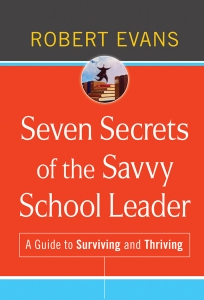Women make up only one-third of the population of heads of independent schools, a statistic that has made little movement in the past decade. What are the variables at play?
My colleagues Liza Lee, Head of School at Columbus School for Girls, and Melissa Boocock Soderberg, Head of School at Columbus Academy, joined me in exploring this question during the fall and winter months, culminating in a presentation at the National Association of Independent Schools (NAIS) Annual Conference in February.
Using the work of Jill Flynn, Kathryn Heath, and Mary Davis Holt in Six Paradoxes Women Leaders Face in 2013 (Harvard Business Review, 1/03/13) as a springboard, we considered trends beyond the independent school world, examined data available from NAIS,* and reflected on our own experiences. Here, in several parts, is what we learned.

Photo: Robyn Mackenzie/Shutterstock
The Pay Paradox
Citing a 2012 report from the American Association of University Women, Flynn, Heath and Holt state that though women are better educated than ever, earning almost 60% of all college degrees, they earn 23% less than men on average. They attribute some of this differential to different career paths and cite a study that shows a gender differential of 12% among college graduates when choice of profession is factored out.
What’s the landscape in independent schools?
Among the 1,077 schools responding to both the executive compensation and head’s gender questions in the NAIS survey of fall 2013, 363 schools – 34% – are headed by women. For those schools, median head’s salary for men exceeds median head’s salary for women by 21%.
Might this be explained by the greater representation of women heading small schools and elementary schools? To some extent, perhaps. Yet, even in these schools, women are earning less for the same work. Let’s take a closer look.
In the smallest schools, with enrollment of under 200, we see fairly even gender distribution in headship, with women actually in the majority at 51%. The salary differential still exists here, though less so. In these schools, median head’s salary for men exceeds median head’s salary for women by 14%.
In the next cohort, schools with enrollment of 201-300, 43% of the heads are women. In these schools, that salary differential is 15%.
In elementary school headship, women weighed in at 46%. In these schools, median head’s salary for men exceeds median head’s salary for women by 28%.
Why aren’t women serving in headship in larger number?
One explanation could be that pursuing and remaining in headship is less financially rewarding for women than it is for their male peers.
*Special thanks to NAIS’s Martha Lucia Galindo, Ph.D., Senior Statistician and Hilary LaMonte, VP for Data Analysis and School Leadership.




 I learned recently that a member of Meredith’s class and her mother were enjoying an audio book version of John Green’s
I learned recently that a member of Meredith’s class and her mother were enjoying an audio book version of John Green’s 


